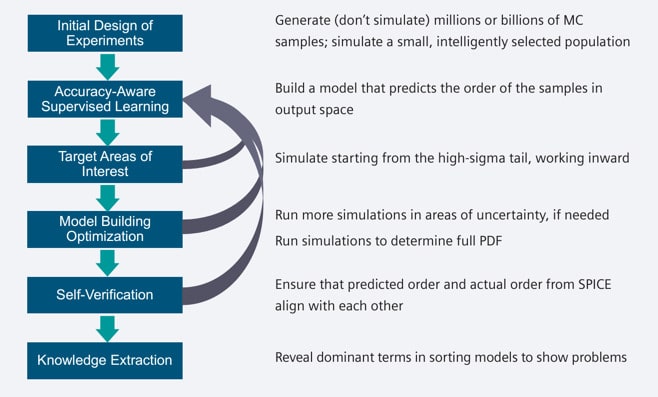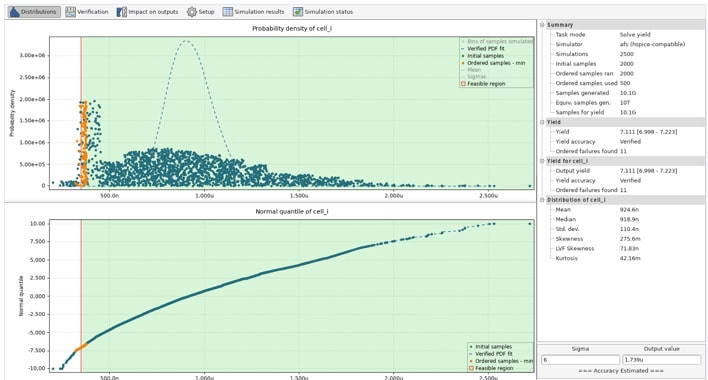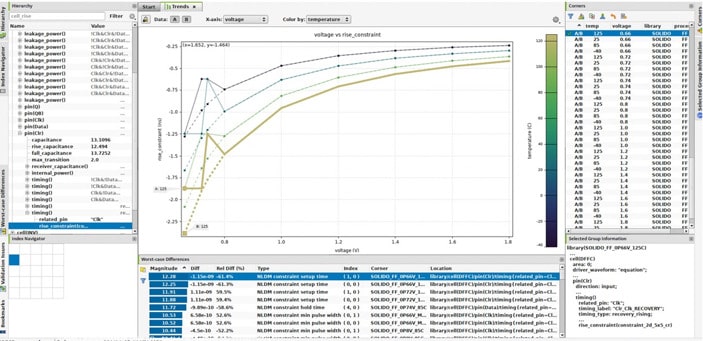Can you name the EDA vendor that first used AI starting 15 years ago for circuit designers using SPICE simulators? I can remember that vendor, it was Solido, now part of Siemens EDA, and I just read their 8 page paper on how they look at the various levels of AI being used in EDA to help IC designers work smarter and faster than using manual methods.
Custom designs including cell, memory and analog IP libraries require SPICE simulations to be run across many Process, Voltage and Temperature (PVT) combinations as well as local variation to be fully verified to target yield, such as 3, 4, 5, 6 sigma, or higher. In addition, timing models used by logic synthesis and static timing analysis tools also require many SPICE simulations for .lib modeling and validation, especially with statistical variation included in Liberty Variation Format (LVF) sections of .libs. These tasks need millions or billions of SPICE simulations, and may take weeks to complete.
Solido technology uses an adaptive AI approach that uses SPICE simulations to get initial results, selects sample points, simulates more tail-end points, then self-verifies and adapts as needed, with results matching brute-force Monte Carlo methods in a fraction of the time.
Any EDA tool that uses AI must meet a criteria to be trusted, like can it be verified, is it accurate compared to a reference, will it work in general on all my designs, is it strong enough to save me time and effort, and can it be used by an engineering team. You can also think about the maturity level of your EDA tool with AI features.
- Level 0 – no AI approach, SPICE with brute-force Monte Carlo.
- Level 1 – partially reliable AI, where it works on some cells, but not all.
- Level 2 – partially reliable AI, with self-verification and acceptable accuracy.
- Level 3 – adaptive, accuracy-aware AI, where low accuracy results are replaced by higher accuracy results through more data collection, improving models automatically.
- Level 4 – full production AI that works for all cells, all corner cases, all the time.
Here’s an EDA tool approach for the Level 3 of AI maturity:

This automated methodology produces accurate results very quickly, yet doesn’t require manual intervention. Reaching the level 1 of AI takes days, level 2 will take months, level 3 requires years, and level 4 will require decades of developer years to attain.
Solido Design Environment has a feature for high-sigma verification, where AI speeds up SPICE runs by an order of magnitude, yet the accuracy is full SPICE. Engineers can reach 6 sigma verification results in much less time versus brute-force methods. Using the High-Sigma Verifier approach showed a speed improvement of 4,000,000X faster than brute-force in a cell example. With old methods an engineering team wouldn’t even consider high sigma verification, because the runtimes would be too slow.
Furthermore, additive AI enables Solido Design Environment to re-use AI models from one run to help further speed-up subsequent runs, accelerating incremental verification tasks by up to an additional 100X.

To create and verify Liberty (.lib) models with AI, an engineer would run Solido Generator which produces new PVT corner .libs using existing PVT corners as anchor data, and Solido Analytics to fully validate .libs, including detecting outliers and potential issues in.lib data automatically. Both these tools are part of Solido Characterization Suite. The AI techniques here reduce .lib production and validation time from weeks to just hours of run time.

The roadmap for AI techniques with Solido tools includes Assistive AI, where generative AI will help engineers find and choose design optimization options.
Summary
Solido has a 15 year history of applying AI techniques to circuit designers for high-sigma verification and cell characterization, giving them verification results in much shorter run times. Ask your EDA vendors what their experience is in applying AI methods to their tools and try to see what level of AI maturity is being offered. Reaching a level 3 or level 4 AI maturity requires decades of development effort.
Read the 8 page article at Siemens EDA.
Related Blogs
- AI for the design of Custom, Analog Mixed-Signal ICs
- Using ML for Statistical Circuit Verification
- Using ML for Statistical Circuit Verification
- DAC 2021 – Taming Process Variability in Semiconductor IP
- Machine Learning Applied to IP Validation, Running on AWS Graviton2
- From Silicon To Systems






Comments
There are no comments yet.
You must register or log in to view/post comments.